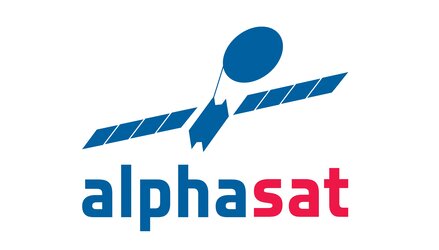Exploring new frontiers of frequency
Telecommunications is a booming business. As mobile phones become increasingly ubiquitous, broadband Internet serves everything from work to play and television stations broadcast hundreds upon hundreds of channels, the satellites that support these services are being used to their full extent.
Satellites use radio frequencies to communicate with Earth, however, and as with so many good things, there is a limited supply of available frequencies.
Our tried-and-true frequencies are the Ka- and Ku-bands. The Ka-band is often used for high data rates, because its capacity for higher bandwidth and relative accessibility lend themselves well to large volumes of information.
These attractive qualities naturally result in a great deal of use, which in turn leaves us with a crowded frequency band with ever-decreasing capacity for exploitation. New options are needed if we want to continue expanding into the information age.
To boldly go
Enter the Q- and V-bands. These higher frequencies will soon be explored by a Technology Demonstration Payload aboard Europe’s largest telecommunications satellite: Alphasat. TDP 5, as it is also known, is the Aldo Paraboni Q/V-Band Communication and Propagation experiment.
The Q- and V-bands were previously not considered viable options for commercial communication purposes, as they can place a number of limitations on providers. Up until very recently, utilising these frequencies means much more power would be required than is normally the case.
Power must be increased to compensate for the ‘fading’ that occurs due to atmospheric conditions on Earth. In other words, turbulent weather can affect the signal strength – a weakness traditionally found in the higher frequencies. Larger energy consumption also corresponds to bigger price tags.
That is no longer the whole story: recent developments in technology coupled with extensive research have made great headway in overcoming these restrictions.
Taking experiments to a higher level

Italian telecommunication companies Thales Alenia Space and Space Engineering took this as their chequered flag and, as ESA co-contractors supported by Italy’s ASI space agency, developed a package that capitalised on the opportunity presented by Alphasat to test the Q/V-band feasibility in orbit. The payload is named after Italian scientist Aldo Paraboni, who dedicated his life to researching these possibilities. He died in 2011, before the experiments could make it to orbit.
Two independent subsystems make up TDP 5.
The first is COMEX. COMEX tests the performance of broadband satcoms in these bands. As we now know, weather conditions on Earth can wreak havoc on transmissions in higher frequencies. COMEX monitors the Q-band in downlink and V-band in uplink, and trials new ways of adapting the signal when confronted with challenging atmospheric conditions. It assesses the effectiveness of the compensatory techniques, and records the results.
COMEX is complemented by SCIEX, the propagation experiment. It will precisely measure to what extent negative conditions affect transmissions in Ka- and Q-band. Exact figures obtained in orbit can provide invaluable data for developing technology that further reduces fading in high-frequency broadband communication.
Improving connections
Normally this is minimised by either introducing a static, non-adaptive transmission or using a signal that continually adjusts its structure. Both these methods are a trade-off between signal strength and reliability, however.
A static signal must have a large signal-to-noise margin to compensate for adverse conditions, but is also less effective in clear skies. A link that recalculates whenever fading is recorded can cope better with varying conditions, but means the connection slows down during mode-switching.
Alphasat provides the perfect opportunity for SCIEX and COMEX to determine how the two higher frequencies behave in space, and provide more details on how performance can be improved for commercial purposes.
Together they will provide the figures and knowledge necessary for the upgrade from Ka- to Q- and V-band.
Economy of scale
One year in orbit aboard Alphasat should provide the Q/V-band payload with enough data to determine what settings and techniques result in the most reliable signals. By the third year it could already be used to test possible services, such as voice and video transmission.
Free of the metaphorical wear and tear of the Ka-band, the Q- and V-bands are not only being considered for their comparative availability, but also present a number of benefits that cement their place in the future of telecommunications.
Our growing demand for more bandwidth is met by their capacity for high data rates. As further research leads to more sophisticated technology and efficiency, energy-guzzling equipment will no longer be necessary. In fact, the Q- and V-bands actually require smaller user terminals than Ka and Ku, which dramatically reduces the cost of production. That in turn brings down service fees; the higher the frequency, the lower the cost.















 Germany
Germany
 Austria
Austria
 Belgium
Belgium
 Denmark
Denmark
 Spain
Spain
 Estonia
Estonia
 Finland
Finland
 France
France
 Greece
Greece
 Hungary
Hungary
 Ireland
Ireland
 Italy
Italy
 Luxembourg
Luxembourg
 Norway
Norway
 The Netherlands
The Netherlands
 Poland
Poland
 Portugal
Portugal
 Czechia
Czechia
 Romania
Romania
 United Kingdom
United Kingdom
 Slovenia
Slovenia
 Sweden
Sweden
 Switzerland
Switzerland




























